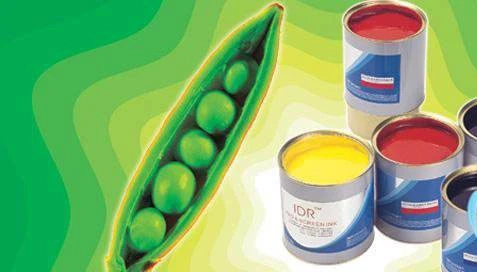Recent years,more and more parents like to purchase Eco-friendly children books for their children, which makes children's book printers reduce to use ink or use Eco-friendly inks when print children’s book.
In this article,we will mainly introduce 3 types of eco-friendly ink for children book printing.
To see whether the ink is an environmentally friendly ink, the following two points are mainly considered:
Heavy metals, due to children's reading habits, heavy metals in ink may be inhaled from the mouth.
Volatile substances, solvents and additives used in ink, include aromatic hydrocarbon, alcohol, etc. They evaporate as the ink dries and enter the reader's respiratory system.
What types of environmentally friendly inks are included?
Rice bran inkRice bran ink technology originated from Japan. At present, many institutions and book printing companies in china are studying it. The main reason is that both China and Japan are big countries in rice consumption and production.
Without exerting its maximum value, the development of rice bran oil refining technology and the technological breakthrough of rice bran oil in ink not only maximizes the value of rice bran, but also further improves the environmental protection and sustainable development of printing ink.
The main advantages of rice bran ink are: ink VOC (Volatile Organic Compounds, volatile organic compounds) residue is low, migration is low, and environmental pollution is little; rice bran resources are easy to localize, which is in line with Chinese national conditions; The residue of harmful substances is small and the safety is high.
However, the development of rice bran ink is also affected by some objective conditions and ink performance defects, mainly including: China's rice bran oil refining and utilization technology is not developed and popularized enough, the scale is not enough, the cost of rice bran oil is relatively high; The drying speed is slow; the application technology of rice bran ink is not popular enough, and the printing operation and control details are not well known, etc.So rice bran ink is not widely used in children's book printing China.
2.Soybean ink
The aromatic hydrocarbons of mineral oil in the ink are reduced or disappeared, but the influence of VOC is still unavoidable. Therefore, some of the mineral oil is replaced by soybean oil in soybean ink. After mildly purifying soybean oil, it is mixed with additives such as pigments and resins.
Soybean ink has many advantages: scratch resistance, no irritating odor, light and heat resistance, easier to recycle, wide color, etc. In addition to soybean oil, other vegetable oils can also be used, such as linseed oil.
Now,many printing companies often use the soybean ink to printing children’s books.
3.Water-based ink
Water-based ink does not contain volatile organic solvents, and only needs to be diluted with water during printing. Therefore, the water-based ink greatly reduces the emission of VOCs and avoids the pollution of volatile organic compounds. At the same time, it significantly reduces the residual hazardous substances on the surface of printed products, and is one of the most environmentally friendly ink types.
In addition, the application of water-based ink can also reduce the fire hazard caused by static electricity and flammable solvents, and reduce the residual solvent odor on the surface of the printed matter.
Therefore, the application of water-based inks in food packaging, children's board book printing, tobacco and alcohol packaging is becoming more and more common.
0


